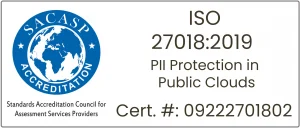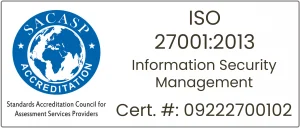In the realm of enterprise technology, where effectiveness and connectivity are paramount, IBM i stands as a reliable cornerstone. Within its robust framework lie myriad capabilities, notably Integrated Web Services, catalysing digital transformation and operational excellence, which plays a pivotal role in modernising business operations and driving innovation.
By providing seamless integration capabilities, organisations reap several benefits like connecting disparate systems, streamlining processes, and enhancing collaboration across departments. They are highly agile and scalable, while being scalable and secure, enabling swift market adaptations and ensuring data protection.
In this blog, let us delve into a comprehensive exploration of IBM i Web Services, uncovering their functionalities, benefits, and practical implementation strategies.
What is Integrated Web Services for IBMi?
Integrated Web Services for IBM i is a solution that facilitates the integration of Integrated Language Environment (ILE) applications into the web services and service-oriented architecture (SOA) landscape. This encompasses two key technologies for AS400 RPG: the IWS Server and the IWS clients for ILE. This transformation extends the reach of traditional IBM i applications to a wider ecosystem by encapsulating business logic and data access capabilities into standardised web service interfaces, typically utilising protocols such as SOAP (Simple Object Access Protocol) or REST (Representational State Transfer).
Adopting integrated web services makes IBM i applications accessible via standard HTTP requests, fostering seamless integration across platforms and technologies. This facilitates interoperability between applications written in different languages and running on various platforms, eliminating language or platform barriers. Integrated web services on IBM i also enhance reusability and modularity within applications, thus improving maintainability and scalability. Developers can compartmentalise their code, exposing distinct functionalities as standalone web services that can be shared across multiple applications.
Furthermore, these web services facilitate secure communication between IBM i applications and external systems. Developers can incorporate authentication, authorisation, and encryption protocols to safeguard data confidentiality and integrity during transmission. Additionally, the built-in logging and auditing features aid in tracking and monitoring web service usage, thereby enhancing overall security and compliance measures.
Integrated web services on IBM i utilise existing server infrastructure, reducing the requirement for additional hardware or software investments. IBM i boasts robust server capabilities, encompassing job management, resource allocation, and scalability features, ensuring dependable and scalable deployment of web services.
Overall, integrated web services enable organisations to modernise existing applications, expand functionality to new environments, and seamlessly integrate with modern web and cloud-based systems. Embracing this approach allows businesses to unlock opportunities for innovation, collaboration, and digital transformation while maximising their existing IBM i investments.
How it Works on IBM i Server
Integrated web services are implemented using robust technologies tailored to the platform’s unique capabilities. These include Apache Axis, renowned for its versatility and compatibility with various programming languages, along with IBM WebSphere Application Server and IBM Integrated Web Services Server, both offering comprehensive tools and infrastructure for deploying, managing, and consuming web services seamlessly on IBM i.
Developers harness these technologies to define the interfaces of their web services, ensuring interoperability and efficient communication between systems. By adhering to standard protocols like SOAP (Simple Object Access Protocol) or REST (Representational State Transfer), developers establish a foundation for flexible and scalable communication channels. SOAP provides a robust and feature-rich protocol ideal for complex enterprise integrations, while REST offers a lightweight and flexible approach suited for modern web architectures.
Through these technologies, IBM i serves as a powerful platform for hosting and facilitating web services, enabling organisations to extend the reach of their applications and unlock new possibilities for integration and collaboration. Whether it’s accessing IBM i data from external systems or integrating with cloud services and IoT devices, the capabilities of integrated web services on IBM i empower organisations to leverage their existing investments while embracing the future of interconnected systems.
List of Integrated Web Services in IBM I
Integrated web services in IBMi cover a wide range of functionalities, including:
Database Access and Data Manipulation
Integrated Web Services in IBM i enable seamless integration with the system’s database, allowing for efficient data access and manipulation.
They offer diverse functionalities listed below:
SQL Services:
Leveraging SQL (Structured Query Language) capabilities, developers can create web services to perform CRUD (Create, Read, Update, Delete) operations on DB2 databases.
Data Queues:
Web services can be utilised to interact with data queues, enabling real-time communication and message passing between different parts of the system or between different systems.
Data Transfer:
IBM i web services facilitate data transfer operations between IBM i systems and other platforms, ensuring smooth interoperability.
Programmatic Business Logic Execution
IBM i web services empower developers to execute programmatic business logic, enhancing automation and efficiency.
The list of
Integrated Language Environment (ILE):
Leveraging ILE capabilities, developers can expose RPG, COBOL, or CL programs as web services, allowing for seamless invocation of business logic from external applications.
Service Programs:
Web services can be built around service programs, encapsulating reusable business logic and promoting modular development practices.
Data Transformation:
Web services facilitate data transformation tasks, enabling the conversion of data formats between different systems or applications.
File and Document Management:
Integrated Web Services on IBM i provide capabilities for managing files and documents, facilitating efficient storage and retrieval operations.
Integrated File System (IFS):
Web services can interact with the IFS, enabling file management operations such as reading, writing, and deleting files stored on the system.
Document Management:
IBM i web services support document management tasks, including document indexing, retrieval, and archival, enhancing document-centric workflows within the organisations.
System Monitoring and Management
Web services on IBM i offer functionalities for monitoring and managing system resources, ensuring optimal performance and reliability.
System APIs:
Leveraging system APIs, web services can retrieve system information, monitor system health, and perform system management tasks such as job scheduling and job management.
Error Logging and Reporting:
Web services enable error logging and reporting functionalities, facilitating proactive monitoring, and troubleshooting of system issues.
Performance Monitoring:
IBM i web services provide capabilities for monitoring system performance metrics, enabling administrators to identify and address performance bottlenecks.
Integration with External APIs and Services
IBM i web services seamlessly integrate with external APIs and services, enabling connectivity with third-party systems and applications. This includes:
RESTful APIs:
Web services can be designed following RESTful principles, allowing for easy integration with external REST APIs and consumption by a wide range of clients.
SOAP Services:
IBM i web services support SOAP-based integration, enabling interoperability with legacy systems and enterprise applications.
OAuth and Authentication:
Web services provide support for OAuth authentication, enabling secure access to external APIs and services while ensuring data confidentiality and integrity.
Unlocking the advantages
The adoption of integrated web services on IBMi offers numerous advantages, including:
Improved Interoperability:
Facilitates seamless integration with external systems and services, allowing for efficient data exchange and communication across diverse platforms.
Enhanced Flexibility:
Enables the reuse and extension of existing IBMi applications, empowering organisations to adapt quickly to changing business requirements and scale their solutions as needed.
Increased Efficiency:
Streamlines business processes by automating data exchange and workflow orchestration, leading to enhanced productivity, and reduced manual effort.
Scalability:
Supports the growth and evolution of applications by leveraging modern web technologies, enabling organisations to handle increased workload and user demands without sacrificing performance.
Cost-effectiveness:
Reduces development time and effort by leveraging existing IBMi assets, minimizing the need for extensive redevelopment or replacement of legacy systems.
Navigating the challenges
The adoption of integrated web services on IBMi also presents certain challenges that organisations need to address:
Legacy Integration:
Integrating legacy IBMi applications with modern web services may require significant refactoring and adaptation of existing codebases to align with modern standards and protocols.
Security Concerns:
Ensuring the security of web services and data exchanged over the network is paramount, requiring robust authentication, encryption, and access control mechanisms to protect against potential threats and vulnerabilities.
Performance Optimisation:
Optimising the performance of web services on IBMi platforms to ensure responsiveness and scalability under heavy load conditions may require careful tuning and optimization of server resources and configurations.
Skill Gap:
Developing and managing integrated web services on IBMi platforms requires specialized skills and knowledge of modern web technologies, which may be lacking within some organisations and require additional training or expertise.
Externalizing IBM i Programs as Web Services
It is one of the fundamental capabilities offered by integrated web services on IBMi, enabling organisations to modernise their legacy RPG, COBOL, or CL programs and integrate them seamlessly into modern architectures.
This process involves several steps:
Defining Service Interfaces:
The first step is to define the service interfaces for the existing IBM i programs. This involves identifying the functionalities that need to be exposed as web services and designing the input and output parameters, as well as the operations supported by the services. Developers typically use tools provided by the IBM i platform, such as Integrated Language Environment (ILE), to define these service interfaces.
Implementing Service Logic:
Once the service interfaces are defined, developers implement the logic for the web services by encapsulating the existing RPG, COBOL, or CL program logic within the service endpoints. This may involve refactoring the existing code to adhere to modern web service standards and best practices, such as using standardized data formats (e.g., JSON or XML) and implementing error-handling mechanisms.
Deploying Callable Endpoints:
After implementing the service logic, the web services are deployed as callable endpoints accessible over the network. This typically involves configuring the IBM i server to expose the web services via HTTP or HTTPS protocols and defining the endpoint URLs and access permissions. Developers may leverage built-in features of the IBM i platform, such as Integrated Web Services Server or Apache Axis, to deploy and manage the web services.
Integrating into Modern Architectures:
Once deployed, the externalized IBM i programs can be integrated seamlessly into modern architectures and applications. Other systems and applications can consume the web services using standard HTTP requests, allowing them to leverage the functionalities provided by the legacy IBM i programs without direct access to the underlying code. This enables organisations to extend the value of their legacy applications and leverage their investment in IBM i technology within a modern, interconnected IT ecosystem.
By externalizing IBM i programs as web services, organisations can bridge the gap between legacy systems and modern architectures, unlocking the value of their existing IBM i assets and facilitating integration with new technologies and platforms. This approach enables organisations to modernize their IT infrastructure incrementally, without the need for wholesale replacements or disruptions to existing business processes.
Web Services Client for ILE
Within the Integrated Web Services for IBM i framework, applications crafted within the Integrated Language Environment (ILE) seamlessly interact with external web services hosted on diverse platforms, facilitated by the pivotal role of the Web Services Client for ILE. This functionality is facilitated through the IWS client for ILE, which empowers applications to operate as web services clients by generating RPG, C, C++ counterparts that ILE programs can readily utilise. These counterparts simplify the complexities of web service protocols, managing the serialisation and deserialisation of service requests and responses, thereby streamlining the communication process between IBM i applications and external systems.
Highlighting the importance of multi-platform integration and adaptation to contemporary development paradigms, the Web Services Client for ILE underscores its significance within the Integrated Web Services for IBM i framework. Despite initial apprehensions among RPG AS400 developers, the transition to web services, particularly RESTful architecture, has become imperative in the era of rapid internet-driven transformations. Krengel Technologies’ RPG-XML Suite stands out as a testament to this evolution, providing a comprehensive solution for RPG AS400 developers to effectively navigate the complexities of web service development without requiring an extensive development toolset.
Through the RPG-XML Suite, developers gain access to a suite of programs, commands, and procedures tailored to their specific needs, enabling them to work with XML and JSON, offer web services, and consume Integrated Web Services remotely, thus aligning their applications with modern web-centric architectures and ensuring their continued relevance and competitiveness in the digital landscape.
Conclusion
Integrated web services offer a transformative solution for unlocking the potential of IBMi applications and integrating them into modern, web-centric architectures. By embracing these services, organisations can future-proof their systems, ensuring adaptability and scalability to meet the evolving demands of the digital landscape. As technology continues to advance, organisations must harness the power of integrated web services to drive efficiency, collaboration, and growth.
ZetaRP emerges as the premier partner for organisations seeking excellence. With a wealth of expertise and experience in IBM i modernisation and web services development, ZetaRP offers customised AS400 Services tailored to address the unique needs of each client. From efficient project execution to comprehensive support, ZetaRP provides end-to-end assistance to ensure the success of your integrated web services initiative. With us, embark on your integrated web services journey with confidence and zeal, enabling a promising transformation towards a future of enhanced connectivity, efficiency, and success.
Do you feel overwhelmed by the complexity of managing AS400 based Core Banking and Financial Products?
Related Posts
Understanding the Role of AS400 DB2 – Basics and Beyond
In the evolving realm of database management, IBM AS400 DB2 stands as a stalwart, offering robust solutions tailored to diverse enterprise needs. Specifically, when operating on the AS/400 platform, DB2...
AS400 Migration to Cloud: Here’s What You Need to Know
Migrating legacy systems to the cloud is essential for modernising infrastructure and fostering innovation in today's digital landscape. The AS400, renowned for its reliability, plays a crucial role in...
Embracing Transformation through IBM AS400 Application Modernization
In today's fast-paced tech landscape, businesses face a crucial decision point. At the core of this lies AS400, a long-standing pillar of enterprise computing. But with technology evolving rapidly, how does...


















